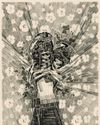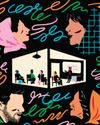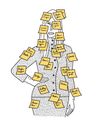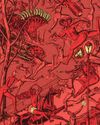
When I first became a doctor, I cared for an older man whom I’ll call Ted. He was so sick with pneumonia that he was struggling to breathe. His primary-care physician had prescribed one antibiotic after another, but his symptoms had only worsened; by the time I saw him in the hospital, he had a high fever and was coughing up blood. His lungs seemed to be infected with methicillin-resistant Staphylococcus aureus (MRSA), a bacterium so hardy that few drugs can kill it. I placed an oxygen tube in his nostrils, and one of my colleagues inserted an I.V. into his arm. We decided to give him vancomycin, a last line of defense against otherwise untreatable infections.
Ted recovered with astonishing speed. When I stopped by the next morning, he smiled and removed the oxygen tube, letting it dangle near his neck like a pendant. Then he pointed to the I.V. pole near his bed, where a clear liquid was dripping from a bag and into his veins.
“Where did that stuff come from?” Ted asked.
“The pharmacy,” I said.
“No, I mean, where did it come from?”
At the time, I could barely pronounce the names of medications, let alone hold forth on their provenance. “I’ll have to get back to you,” I told Ted. He was discharged before I could. But, in the years that followed, I often thought about his question. Every day, I administer medicines whose origins are a mystery to me. I occasionally meet a patient for whom I have no effective treatment to offer, and Ted’s inquiry starts to seem existential. Where do drugs come from, and how can we get more of them?
This story is from the September 09, 2024 edition of The New Yorker.
Start your 7-day Magzter GOLD free trial to access thousands of curated premium stories, and 9,000+ magazines and newspapers.
Already a subscriber ? Sign In
This story is from the September 09, 2024 edition of The New Yorker.
Start your 7-day Magzter GOLD free trial to access thousands of curated premium stories, and 9,000+ magazines and newspapers.
Already a subscriber? Sign In

SOME PERSONAL NEWS
The rise and rise of the entrepreneurial work ethic.

ARMCHAIR QUARTERBACK
Tom Brady's second act, as a football commentator.

A VISIT FROM THE CHIEF
Lidia often went to the third floor of the Graziano Institute and sat down on the wooden bench there, right across from her mother's room.

LANGUAGE LESSONS
Sanaz Toossi's “English” arrives on Broadway.

THE WITNESS
An activist fled Syria to reveal Assad's crimes. Then, mysteriously, he went back.

LINE OF FIRE
The fight to contain an inferno in Los Angeles.

PRODUCTION NOTES: "MELANIA"
Amazon has agreed to pay $40 million to license a Melania Trump documentary, as Jeff Bezos makes overtures to Trump

CAPYBARA, MON COEUR
A giant crush on a giant rodent.

KNOCKIN' ON HEAVEN'S DOOR
It's never too early to imagine the end of the world.

PRIVATE EYE
How Celia Paul paints presence.